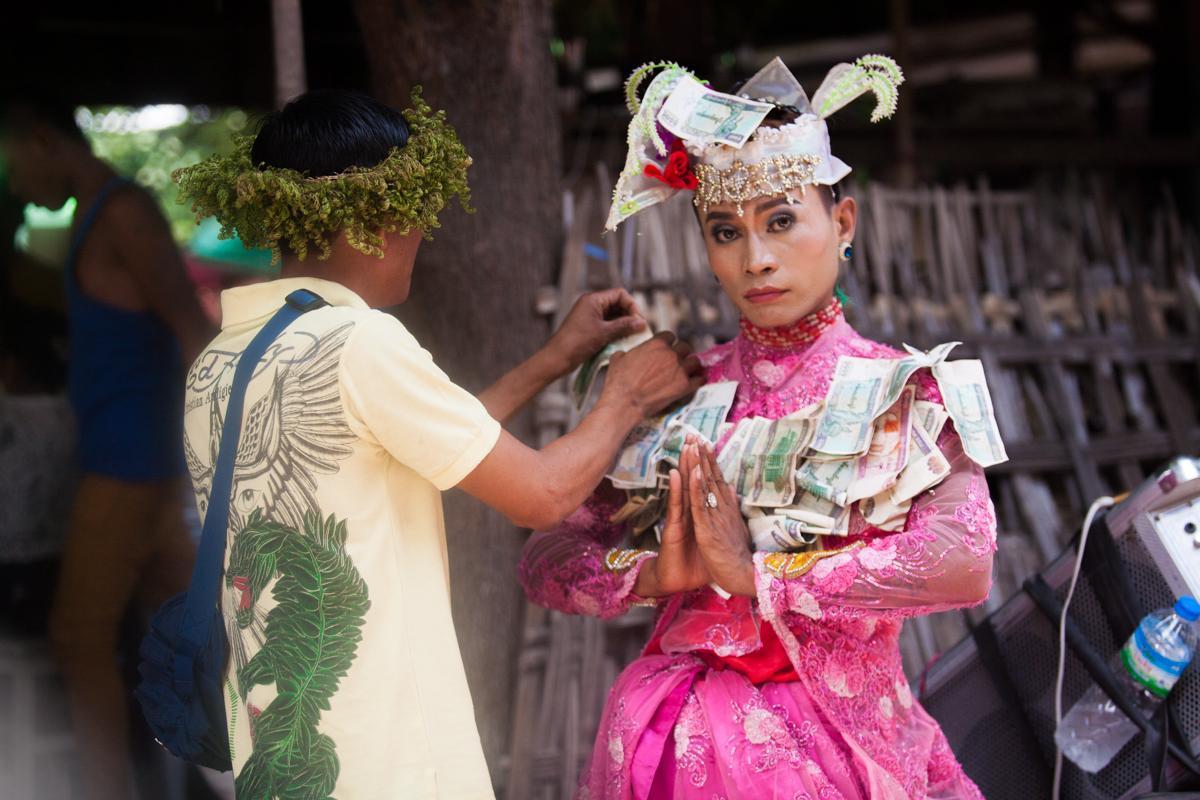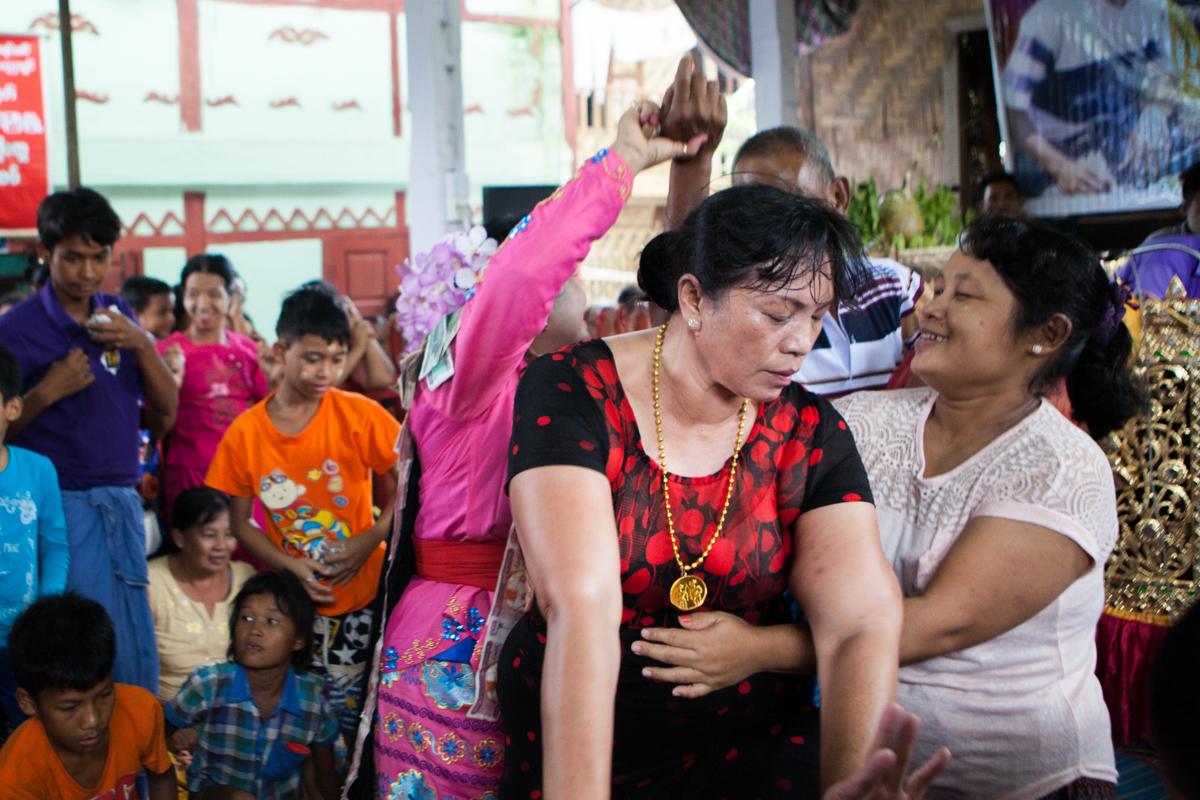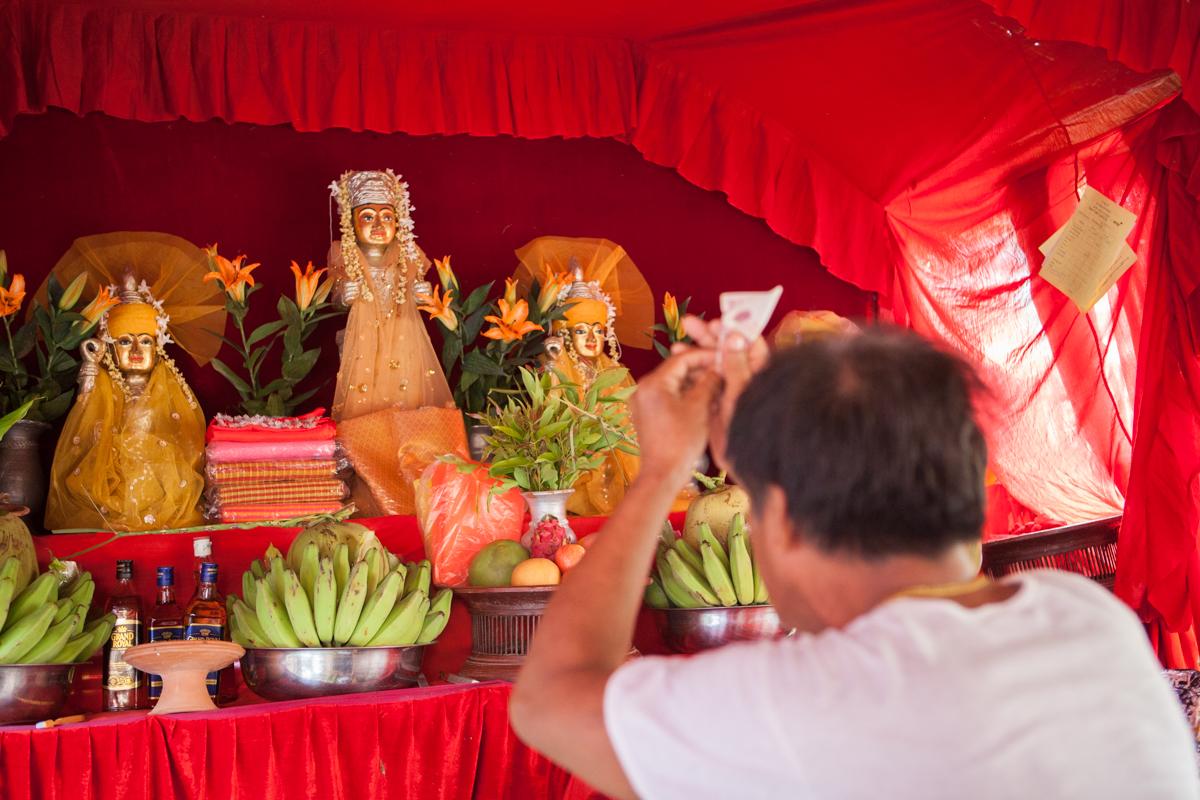Taung Pyone Spirit Festival: Inside Burma's unofficial Gay Pride
Homosexuality is illegal in Burma but every August LGBT groups rally for a religious event. Gemma Taylor visits the Taung Pyone Spirit Festival

Your support helps us to tell the story
From reproductive rights to climate change to Big Tech, The Independent is on the ground when the story is developing. Whether it's investigating the financials of Elon Musk's pro-Trump PAC or producing our latest documentary, 'The A Word', which shines a light on the American women fighting for reproductive rights, we know how important it is to parse out the facts from the messaging.
At such a critical moment in US history, we need reporters on the ground. Your donation allows us to keep sending journalists to speak to both sides of the story.
The Independent is trusted by Americans across the entire political spectrum. And unlike many other quality news outlets, we choose not to lock Americans out of our reporting and analysis with paywalls. We believe quality journalism should be available to everyone, paid for by those who can afford it.
Your support makes all the difference.Every year in August, a small rural village outside of Mandalay transforms into Burma’s unofficial gay village.
“It’s a chance to meet guys from all across the country,” says Moe Kyaw, “when it’s normally hard to find one!” He travelled here to Taung Pyone from Bagan five days ago, and is clearly smitten with new boyfriend, Nay Lin. They met here – Nay Lin is the Chair of Myanmar MSM [Men who have Sex with Men] Network, and a font of knowledge about the festival we are here to attend. He points at a plate of fish and sticky rice left on a shrine. “That’s for the nat who loves gays, and the gays love her.” He adds, “She doesn’t drink,” by way of explaining a lone can of Fanta next to the dish, amidst a tapestry of decorated offerings and booze.
An estimated 250,000 visitors descend on Taung Pyone Nat Pwe (Spirit Festival), the largest of its kind in Burma’s calendar. Nats are spirits which have existed alongside Burmese Buddhist culture since the 11th century. Worshipped across the country, there are 37 in total and they have a little more cheek – and more vices – than the Buddhas.
Most nats, so tradition goes, have met a violent death, and when they revisit earth, they must be kept happy. The Taung Pyone Nat Pwe does that by celebrating two of them – brothers Min Gyi and Min Lay. It’s believed they were executed for failing to provide a brick each for the Taung Pyone pagoda, leaving gaps in the walls.
And apparently what keeps Min Gyi and Min Lay happy is chain smoking, dancing, and drinking their favourite tipple.
“My nat likes to drink beer, wine, Johnny Walker and champagne”, says Mg Mg Kyi, who has been a nat-kadaw, or spirit medium, for 40 years – since he was 13. His first husband fell in love with him when he saw him dance.
Most nat-kadaws are gay or transgender. Gay relationships are illegal in Burma, so the festival offers kadaws a few days each year during which they are not just accepted but adored, too. They each set up a shrine for the duration of the festival. “It’s expensive to be a nat-kadaw,” says Kyi. “It has to be a new outfit every time – and of course we want to out-bling each other!” Along with travel and board, costs soon tot up. Luckily, offerings of food, alcohol, cigarettes and money are happily exchanged for blessings. It pays off in other ways too: Kyi’s nat-possessed dancing also attracted husbands number two and three. He’s still with all three.
But not everyone believes that nats should be worshipped, perhaps because the carefree partying is incongruous with traditional Buddhism. Chit Ko Ko received reports last year of “monks beating gay visitors and nat dancers” at the festival. Ko Ko is the founder of the MSM Network, and has set up shop at the festival, offering HIV testing and support to gay and trans people.
One of his friends, Linn Linn, is a nat-kadaw. “My family is disappointed as they wanted a strong man,” he says, gesturing with his muscles. Linn Linn has been a monk twice, “once when I was seven and then again in my twenties”. Thankfully there’s no sign of hostility this year, and from novice monks to punks, believers, non-believers, young and old, everyone is here to enjoy what’s on offer, with delight rather than judgement.

For visitors like me, the real treat is the dancing. This doesn’t get going until the opening ceremony, four days into the festival. It takes place in the main temple, which gets uncomfortably packed. It’s not for everyone – Nay Lin and Ko Ko refuse to come with me, saying it’s “too busy”, and I soon see what they mean. As I reach the temple, I’m swept along by the jostling crowd. Inside I can hardly see a thing – nor can my Go-Pro which conks out under the heat. I make my exit twice: first, being swept down the temple steps by the undercurrent of crowds; second, being pulled out of the fray by a police officer who decides that, as a tourist I need rescuing.
The day after the ceremony is a better time to visit – with fewer crowds I’m able to wander round the pop-up streets and happen across performances. You’re meant to tip – or make offerings to – the nat-kadaws as they dance, and a guy from the village checks what I hold in my hand, before nodding approvingly. Cash offerings must be a minimum of 10,000 kyat (£5). Anything less will be thrown back at the offerer with mock disdain.
Most kadaws are in their fifties, but new ones emerge every year – and I find myself in the right place at the right time to witness a new embodiment. New mediums are compelled to dance as the nat enters their body – it looks spontaneous to be as outsider, though I would imagine conversations take place about whose turn it is to perform. One guy’s attempt fails (apparently getting squiffy on Burmese beer before claiming to be embodied is a no-no). He looks on despondently as a trans woman goes next. She needs to be supported, wavering as she adjusts to the spirit’s whims. Her dance is more salubrious than the other guy’s though, plus she ignores the pile of money thrown up in the air for spectators to grab, making her a dead cert for a genuine kadaw.

As well as money, scents and stifling heat in the air, there’s love. Whether with love for a new partner, or simply gratitude for the new experiences, it’s not just the nat-kadaws who leave richer.
Travel essentials
Getting there
Thai Airways flies from Heathrow to Mandalay via Bangkok from around £800. Mandalay to Taung Pyone usually takes 45 minutes, but this can become anything from four to eight hours by car during the festival. Taking a motorbike taxi can halve your journey time. Ask your hotel in Mandalay to call you one, and take your driver’s mobile number and fix a meeting time and place for the return journey. It should cost between £5-8 for the return journey.
Where to stay
There are no guesthouses at Taung Pyone, so you’ll need to make a day trip from Mandalay. Dreamlands, an art studio and guesthouse, has dorms and private ensuites. Doubles from £12, B&B.
More information
This year’s festival is slated for 31 July – 7 August (it ends on a full moon, which is 8 August this year). However, expect to hear contradictory dates, and do ask around when you’re in Mandalay so you can confirm when the opening ceremony is taking place.
Join our commenting forum
Join thought-provoking conversations, follow other Independent readers and see their replies
Comments